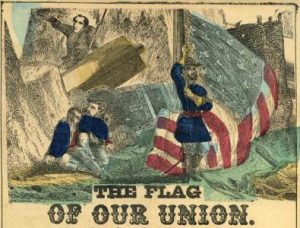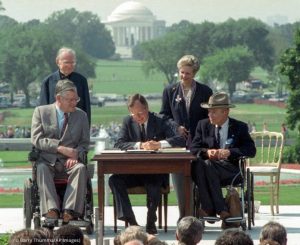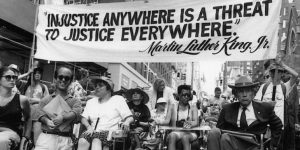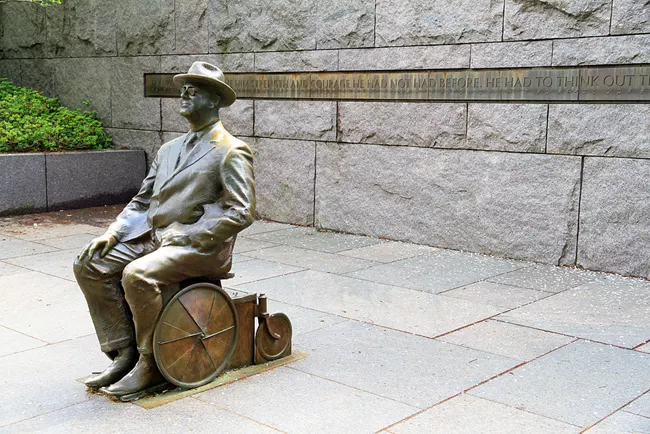Introduction: I’m Sarah, a disability advocate and writer passionate about creating a more inclusive world. The People with Disabilities Fighting for disability rights in the US. From the segregated past to landmark legislation like the Americans with Disabilities Act (ADA), significant progress has been made. Yet, the journey to full inclusion remains incomplete. This article
Introduction:
I’m Sarah, a disability advocate and writer passionate about creating a more inclusive world. The People with Disabilities Fighting for disability rights in the US. From the segregated past to landmark legislation like the Americans with Disabilities Act (ADA), significant progress has been made. Yet, the journey to full inclusion remains incomplete. This article aims to paint a comprehensive picture, exploring the challenges, victories, and opportunities that lie ahead.
Having lived with a chronic illness myself, I understand the barriers people with disabilities face firsthand. Today, I want to delve into the ongoing fight for disability rights in the US, going beyond just physical access and exploring the journey towards genuine inclusion
People with disabilities and A Historical Overview:

Image by:futurelearn.com
This section of your article would outline the historical context of the fight for disability rights in the US, highlighting key milestones and legislative achievements. Here’s how you can structure it:
Pre-Civil War Era:
- Briefly mention the societal views towards disability in the early days of the US, often characterized by fear, pity, and segregation.
- Highlight the lack of rights and opportunities for people with disabilities.
Post-Civil War and Early 20th Century:

Image by:brewminate.com
- Discuss the rise of charity and institutionalization practices towards individuals people with disabilities.
- Mention the emergence of early disability rights movements and advocacy groups.
The Civil Rights Movement and people with disabilities
- Explain how the broader Civil Rights Movement in the 1950s and 1960s paved the way for disability rights activism.
- Focus on landmark legislation like the Rehabilitation Act of 1973, which prohibited discrimination based on disability in federally funded programs.
The Americans people with disabilities Act (ADA):

Image by:ge.usembassy.gov
- Dedicate significant space to the ADA, enacted in 1990, as a watershed moment for disability rights.
- Briefly explain its key provisions, including guaranteeing access to public spaces, employment, transportation, and communication.
- Emphasize the significant impact of the ADA in improving accessibility and opportunities for people with disabilities.
Post-ADA Developments:
- Briefly discuss ongoing legislative efforts to strengthen and expand the ADA’s protections.
- Mention significant legal cases that further clarified and interpreted the ADA.
Article Body:
The fight for disability rights in the US has come a long way. From the segregated past to landmark legislation like the Americans with Disabilities Act (ADA), significant progress has been made. Yet, the journey to full inclusion remains incomplete. This article aims to paint a comprehensive picture, exploring the challenges, victories, and opportunities that lie ahead.
(Table)
| Barrier | Example | Impact |
|---|---|---|
| Physical Accessibility | Lack of ramps, accessible restrooms, and braille signage | Limits mobility, independence, and participation. |
| Attitudinal Barriers | Stereotypes, prejudice, and unconscious bias | Creates a sense of isolation and exclusion. |
| Communication Barriers | Lack of sign language interpreters, audio recordings, or alternative formats | Restricts access to information and participation in diverse activities. |
| Employment Discrimination | Hiring biases, inaccessible workplaces, and lack of accommodations | Limits economic opportunities and financial independence. |
| Educational Inequities | Segregated classrooms, inaccessible learning materials, and lack of support services | Hinders academic achievement and future career prospects. |
From Segregation to Legislation:
Briefly discuss the historical context of disability rights movements, highlighting key milestones like the ADA and its impact on accessibility.
Beyond Ramps:
Expand on the multifaceted barriers beyond physical access, including attitudinal, communication, employment, and educational challenges. Use real-life examples to illustrate the impact on individuals and communities.
Celebrating Victories:
Acknowledge the achievements of disability advocates and organizations, showcasing inspiring stories of individuals overcoming obstacles and contributing to society.
Challenges Remain:

Image by:judithheumann.com
Discuss the persistent issues faced by people with disabilities, such as unemployment, inadequate healthcare access, and discrimination in housing and public spaces. Provide data and statistics to support the narrative.
Moving Forward:
Outline actionable steps for individuals, organizations, and policymakers to promote inclusion. This could include advocating for better legislation, fostering inclusive workplaces, and promoting disability awareness campaigns.
Everyone Has a Role to Play:
Encourage empathy and understanding by highlighting the contributions of people with disabilities and emphasizing the benefits of diversity for society as a whole. Share specific actions individuals can take to create more inclusive environments.
Conclusion:
End with a powerful message emphasizing the importance of continued efforts towards full inclusion. Encourage readers to get involved, advocate for change, and work together to build a society where everyone can thrive.
















